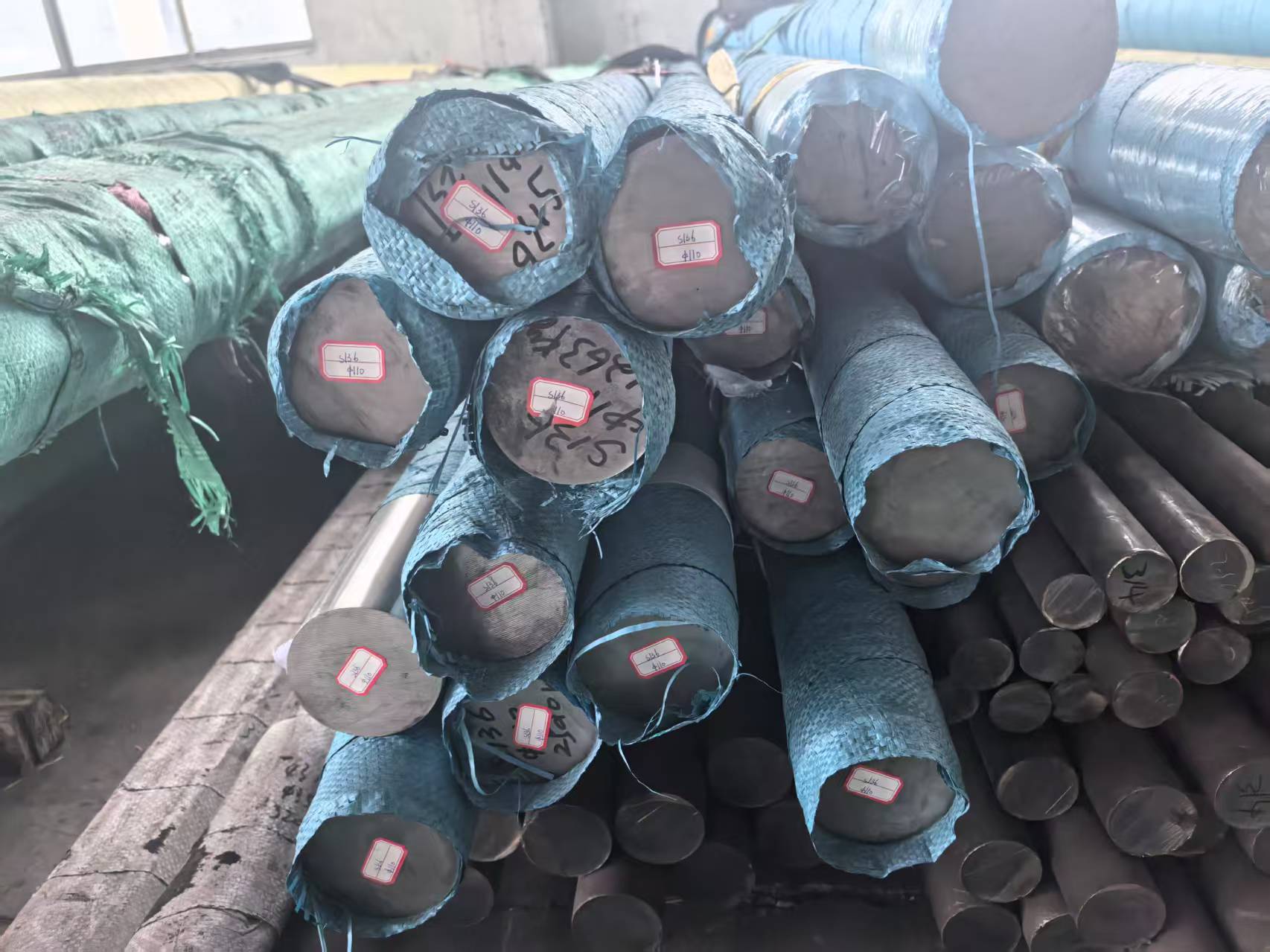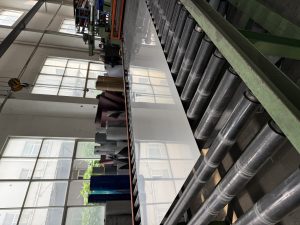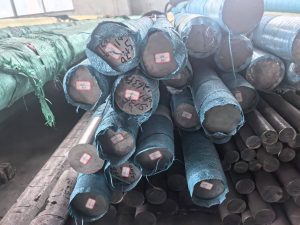40Cr13 steel, also known as 4Cr13, is a Martensitic Stainless Steel. It is recognized for its exceptional hardness and wear resistance. Compliant with GB1220-92 and GBT1220-2007 standards, it contains 0.4% carbon and 12-14% chromium.
This steel is employed extensively in high-load, high-wear resistance, and corrosive applications. Additionally, it is ideal for plastic mold creation.
This article will examine 40Cr13’s chemical composition, mechanical and physical properties, and equivalent grades. It will also highlight its diverse industrial applications.
Overview
In the context of Cr13 steel, 4Cr13 and 40Cr13 are essentially the same material, named differently based on the respective GB1220-92 and GBT1220-2007 national standards. They are both martensitic stainless steels that exhibit similar characteristics, notably in their heat treatment, corrosion resistance, machinability, weldability, and surface finish.
The heat treatment process of these steels involves hardening and tempering to achieve desirable properties. Hardening enhances the strength and wear resistance, while tempering reduces brittleness, ensuring a good balance between hardness and toughness.
4Cr13 and 40Cr13 demonstrate exceptional corrosion resistance, primarily due to their high chromium content. The chromium forms a passive layer on the surface, protecting the underlying material from oxidation and corrosive substances.
The machinability of these steels is moderate, making them suitable for a variety of machining processes. However, their hard nature requires the use of appropriate cutting tools to prevent premature wear.
Their weldability is fair, with preheating and post-weld heat treatment typically required to prevent cracking. Lastly, these steels can achieve a high-quality surface finish through polishing, enhancing their aesthetic appeal and corrosion resistance.
4Cr13 ( 40Cr13) Overview
4Cr13 steel (New name: 40Cr13) is a martensitic type stainless steel, which has higher hardness than 3Cr13 steel after quenching.
4Cr13 reference standard: GB/T 1220 & GB/T 20878
40Cr13 reference standard: GB/T 3280
Equivalent Materials
Equivalent materials to 4Cr13 and 40Cr13 include X39Cr13 (1.4031) as per the European EN 10088-3 standard. These materials share similar heat treatment processes, including annealing, quenching, and tempering, to achieve desired mechanical properties.
The corrosion resistance of these materials is adequate due to their high chromium content, making them suitable for use in environments prone to corrosive agents.
In terms of machinability, 4Cr13 and 40Cr13 are comparable to X39Cr13, although specific tooling and cutting speeds may vary based on the alloy’s specific composition.
The weldability of these materials is generally good, with pre- and post-weld heat treatment often recommended to prevent cracking and maintain strength.
Comparing these alloys to other stainless steel grades, they offer a balanced blend of hardness and toughness, which is not always found in high-carbon stainless steels.
It is important to note that material selection should always be based on the specific demands of the application, considering factors such as mechanical stress, operating temperature, and exposure to corrosive substances.
Understanding the properties of 4Cr13, 40Cr13, and X39Cr13 can help inform appropriate material selection in various industrial applications.
Characteristics
High hardness and wear resistance are key characteristics of both 4Cr13 and 40Cr13, making them suitable for applications such as cutting tools, nozzles, and valve seats. These materials undergo a series of processes, including heat treatment, to enhance their properties and performance.
- Heat Treatment: This process, critical for achieving the desired hardness and strength, involves heating and cooling under controlled conditions. It significantly improves the wear resistance of these alloys.
- Corrosion Resistance: The high chromium content in these alloys offers excellent corrosion resistance, enhancing their durability and lifespan in various environments.
- Machinability: Both 4Cr13 and 40Cr13 display good machinability, making them easy to shape and work with using various tools.
- Weldability: Although these alloys can be welded, the process must be managed carefully to avoid formation of undesirable microstructures that can compromise the material’s properties.
Comparing these alloys with other stainless steels, 4Cr13 and 40Cr13 offer a superior combination of hardness, wear resistance, and corrosion resistance. However, their weldability and machinability are comparable to other stainless steel grades. This balance of properties makes them versatile, well-suited to a range of demanding applications.
Uses
Both 4Cr13 and 40Cr13 materials find extensive use in various industries due to their exceptional hardness, wear resistance, and corrosion resistance properties. These stainless steels are frequently subjected to heat treatment processes, such as quenching and tempering, which significantly enhance their mechanical properties. The performance of 4Cr13/40Cr13, in terms of hardness and corrosion resistance, is commendable when compared with other stainless steels, making them a preferred choice in many applications.
One standout application is in the automotive industry. Here, these materials are instrumental in the manufacturing of crucial components like valve seats and nozzles. Their superior wear resistance properties lead to a longer tool life, reducing the frequency at which these components need to be replaced.
The corrosion resistance of 4Cr13 and 40Cr13 stainless steels is another significant advantage in automotive applications, where parts are often exposed to a variety of corrosive environments. Consequently, the use of these steels contributes to the longevity of automotive parts and reduces maintenance costs. Therefore, the adoption of 4Cr13 and 40Cr13 materials has a profound impact on the overall functionality and life expectancy of automotive tools and components.
Physical Properties
The physical properties of 4Cr13 and 40Cr13, including their density and hardness, play a critical role in their applicability across various industries. These materials possess a density of 7.75 g/cm3, indicating a robust structure that withstands external pressure. Moreover, their hardness, when quenched and tempered, exceeds 50 HRC, signaling excellent wear resistance.
- Heat Treatment: Both 4Cr13 and 40Cr13 undergo a heat treatment process to enhance their hardness and strength. It involves heating the materials to 1130-1150 °C, followed by a cooling phase.
- Corrosion Resistance: Containing about 13% chromium, these materials offer substantial corrosion resistance. This property makes them ideal for use in harsh environments with corrosive elements.
- Machinability: The machinability of these materials is commendable. They can be smoothly cut, shaped, and finished according to the application requirements.
- Weldability: Despite their high hardness, both 4Cr13 and 40Cr13 demonstrate excellent weldability. This attribute allows them to be conveniently joined with other components without compromising their physical properties.
The surface finish of these materials enhances their aesthetic appeal and resistance to external elements, making them a preferred option in various industries, including tool manufacturing, metalworking, and more.




